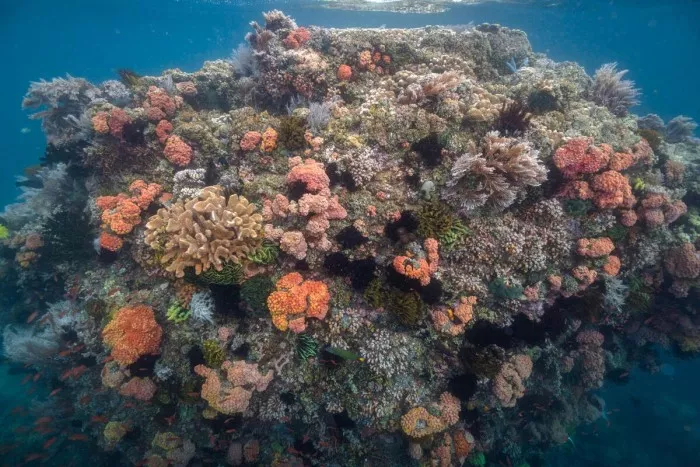With the rise of world ocean temperature, the number of coral bleaching cases will also increase. When corals are bleached, they become more vulnerable to other stress factors, such as water pollution. However, many coral reefs are home to corals, and despite the warming of the ocean, they are still thriving.

Unraveling the complex problem of coral bleaching and its impact on its survival or death may be crucial to the protection of coral reefs - ecosystems on which more than 500 million people around the world depend for food, work, entertainment and coastal protection.
For the first time, researchers mapped the location of living corals before and after a large ocean heat wave. In the new study, scientists show where corals survive despite rising ocean temperatures caused by climate change. The study also found that coastal development and water pollution had an adverse impact on coral reefs.
In the study published in the proceedings of the National Academy of Sciences on May 2 local time, scientists at the Julie Ann Wrigley Global Future Laboratory of Arizona State University (ASU) revealed that different corals and environments will affect their survival possibility when the ocean temperature rises. These findings also show that advanced remote sensing technology provides an unprecedented opportunity to expand the scale of coral reef monitoring.
At home in the Hawaiian Islands, researchers from the ASU global discovery and Conservation Science Center flew into the sky on the global airborne Observatory (GAO). The plane is equipped with an advanced spectrometer, which can be used to map ecosystems under the surface of land and sea. Using these maps, researchers can assess changes in coastal ecosystems over time.
"Repeated coral mapping using Gao reveals how Hawaiian coral reefs respond to large-scale bleaching in 2019," said Greg Asner, lead author of the study and director of the ASU Center for global discovery and conservation sciences. "We found 'winners' and' losers' of corals. Despite rising water temperatures, these winning corals are associated with cleaner water and less coastal development."
When the Hawaiian Islands faced a large-scale bleaching event in 2019, Gao mapped the living coral cover along the eight islands before the ocean heat wave. Using these data, the researchers identified more than 10 potential coral shelters - habitats that could provide safe havens for corals facing climate change. In these potential shelters, despite similar thermal stresses, coral mortality is 40% lower than that of adjacent reefs.
The results also found that coral reefs near heavily exploited coasts were more likely to die in heat waves. When development occurs on land, the amount of pollution entering the coral reef ecosystem increases and creates an adverse environment for coral reefs that are already struggling for warmer seawater.
"This study supports the holomua ocean in Hawaii 30 × The 30 initiative identified not only areas affected by ocean heat waves, but also refuge areas, "said Brian Neilson, co-author of the study and head of Hawaii's Department of aquatic resources." these findings can be incorporated into management plans to help establish a resilient coral reef regional network and maintain Hawaii's coral reefs and communities that depend on them. "
Holomua 30 × The aim of the initiative is to establish marine management areas in 30 per cent of Hawaii's nearshore waters. Hawaii's coral reefs are an integral part of island life and are closely linked to culture and livelihoods. Understanding which corals are surviving is the key to targeted and effective protection.
"Previous approaches have failed to provide actionable interventions that may improve coral survival during heat waves or find places to resist heat waves, so-called coral shelters, for rapid protection. Our findings highlight the new role that coral mortality and survival monitoring can play in targeted protection, thereby protecting more corals in our changing climate," Asner said It is reported that Asner is also the director of Gao.